Sangeh Monkey Forest and A Tale of Walking Trees
The centrepiece of the Sangeh Monkey Forest, the legend of Pura Bukit Sari tells a tale of walking trees. A serene and less-visited destination steeped in legend and history. Though popularly known as Sangeh Monkey Forest, its real name is Alas Pala, or nutmeg forest. Now, the trees differ from the nutmeg plants you might
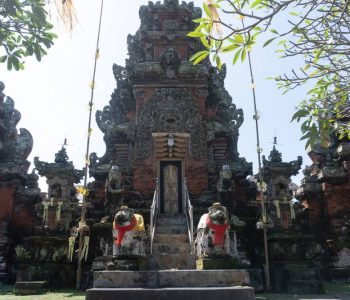
Pura Luhur Rambut Siwi: Temple of Protection
Located in Jembrana, east of Yeh Emang village, Pura Luhur Rambut Siwi is the biggest temple in the regency and despite its humble semblance it is significant in Bali’s religious history. Occupying the quiet southwest coast of the island, the temple boasts a very classical style of Balinese architecture, and enjoys a serene ocean backdrop.

Pura Melanting: Of Merchants and Mysteries
An impressive stairway, lined by vibrant carvings of mythical dragons, marks the entrance to this important temple, found on the dusty mountainsides of Buleleng Regency, north Bali. As a kahyangan jagat, or universal temple, Pura Melanting is visited by all Balinese Hindus, especially those in search of success in business. The history of this temple

Pura Dalem Jagaraga, History Carved into the Walls
Mentioned briefly in our travel feature on North Bali, Pura Dalem Jagaraga deserves its own story, as this temple shares insight into Bali’s colonial history and indeed typifies the distinct characteristics of the northern temples. Pura Dalem Jagaraga is found in the Sawan district of Buleleng Regency. It stands quietly on a village road, opposite
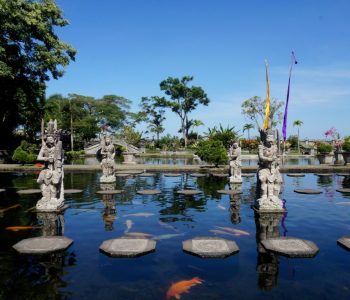
Tirta Gangga: The Water of the Ganges
On the borders of Amlapura, Tirta Gangga is one of the most distinct and recognisable places in Bali, a place where history meets leisure, and architecture meets nature. This estate, built in 1946, is the sister site to Taman Ujung, also built by the King of Karangasem. Stepping into the one-hectare water palace complex, the atmosphere
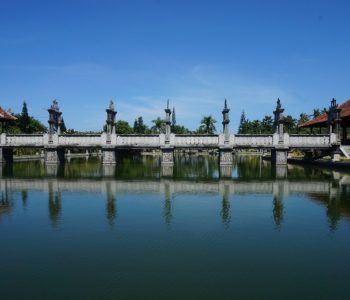
Taman Ujung Water Palace: The Garden at the End
Taman Ujung Sukasada is one of these historical sites. Often referred to as the ‘Water Palace’, it is in some ways a modern puri, or royal palace, built by the last ‘official’ King of Karangasem, I Gusti Bagus Jelantik. Serving under the title of Anak Agung Agung Anglurah Ketut Karangasem, the king reigned from 1908 to 1950,
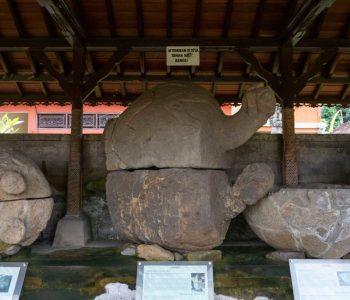
Museum Gedong Arca: Clues from Prehistoric Bali
For the history buffs out there, Museum Gedong Arca in Blahbatuh, Gianyar, is a lesser-visited museum that houses ancient artefacts dating back to Bali’s palaeolithic era, including the largest collection of ancient sarcophagi. Most people’s perception of Balinese history is dominated by events of the last millennium. If we rewind the clock, we will see

Pura Samuan Tiga and the Evolution of Bali’s Temple Philosophy
The structure, philosophy and positioning of a Balinese temple is no accident. It is well thought out, imbued with symbolism and the result of history. Pura Samuan Tiga is part of that history: a temple where wise men gathered centuries ago to unite Bali’s religious sects and redefine temple planning across the island. Located in
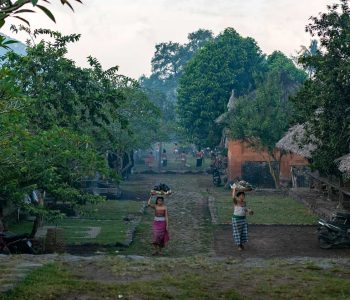
Tenganan Village Explained: History, Customs and Guide of an Ancient Community
Found 3km north from the popular coastal town of Candidasa, Desa Adat Tenganan Pegringsingan (Traditional Village of Tenganan Pegringsingan) is the cultural and administrative centre of the Tenganan area. This land, from the floodplains to the dramatic rolling hills of Karangasem, was said to be bestowed upon its residents by Indra, the God of War
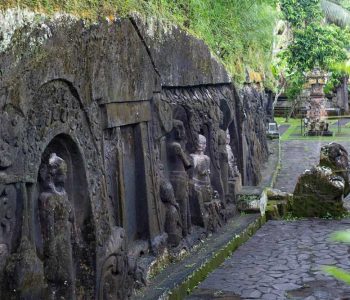
Yeh Pulu Temple: Ancient Carvings of the Anonymous Ascetics
A centuries-old relief adorns Yeh Pulu, a humble but historically significant temple hidden in rural obscurity. Deep in an isolated ravine of Gianyar, these ancient stone-cut carvings give us a peek into Bali from centuries ago. Just east of Ubud is the historically rich village of Bedulu, in Blahbatuh District of Gianyar. Best known for
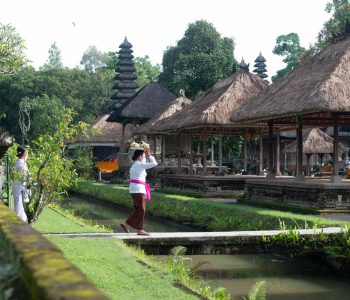
Taman Ayun Temple: A Beautiful Garden Temple
Taman Ayun Temple is an important part of Bali’s history. It is a remnant of the once powerful Mengwi Kingdom, a place of worship for the kings and queens of old. It is the second largest temple complex on the island today and remains an integral part of Bali’s subak water-sharing system. Manicured to near
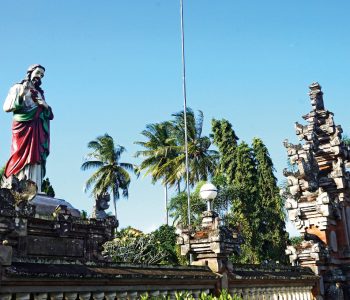
Churches and Cathedrals, the Balinese Way
The west Bali villages of Palasari and Blimbingsari are two Christian hamlets that display a unique amalgamation of Balinese and Gothic architecture. Whilst the population of Bali is predominantly Hindu, other faiths find a home here and even pay homage to the shared visual identity of the island. Bali is known as the island of
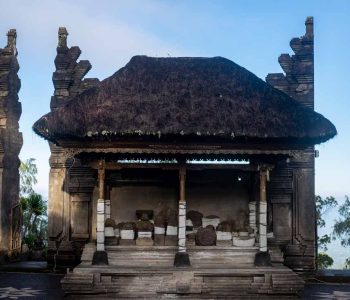
Pura Puncak Penulisan, A Megalithic Museum
On the western rim of the Batur Caldera is the Penulisan summit, the caldera’s second highest peak after Mount Abang on the eastern rim. At the top of this peak, 1,745m above sea level, is an understated, but highly significant, temple known as Pura Puncak Penulisan. Sometimes referred to as Pura Tegeh Kahuripan, this is




